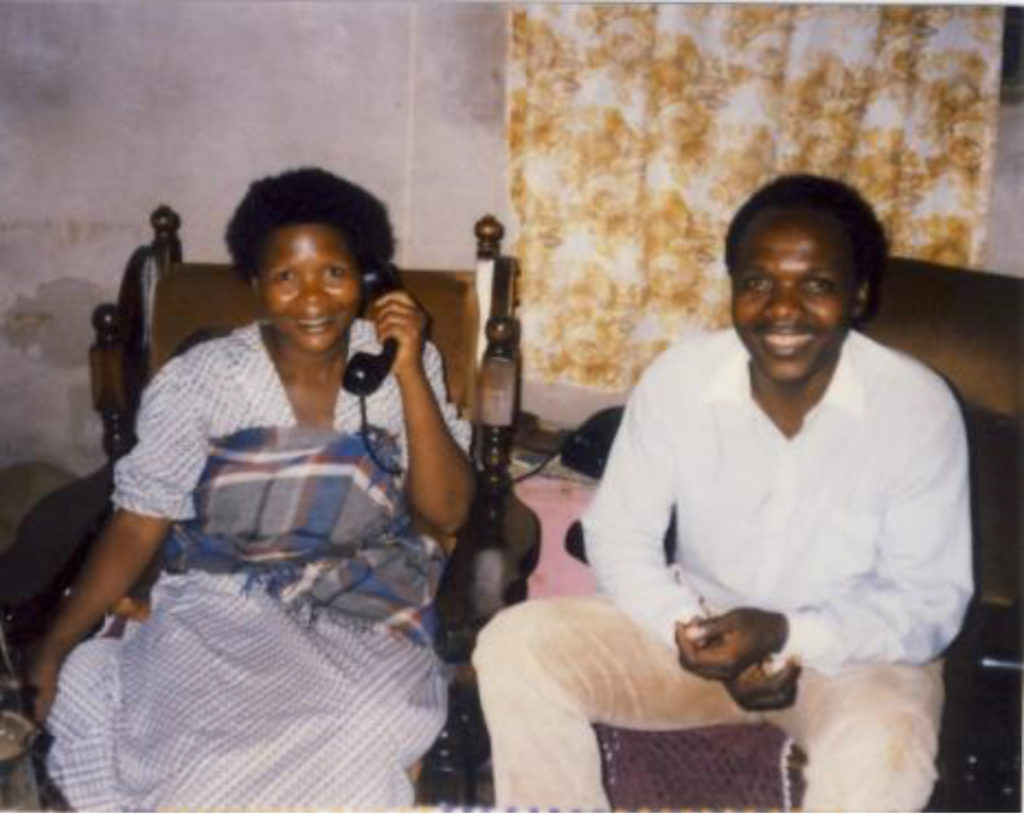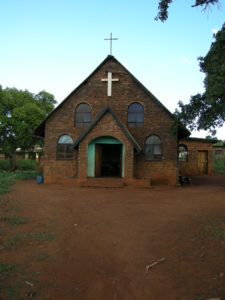Conversion to the Catholic Faith
At the time Benedict was born, the Catholic Church was only beginning to spread to the north-eastern part of the country. The Benedictines of the Pietersburg (now Polokwane) diocese were responsible for this vast area. In 1950 the Irish Missionaries of the Sacred Heart came to help them. Twelve years later the whole northern portion of the diocese, which included Venda, was entrusted to the Missionaries of the Sacred Heart. In 1962 it became the Prefecture Apostolic of Louis Trichardt and in 1972 the Diocese of Louis Trichardt-Tzaneen under Bishop J.T. Durkin MSC. Later the name was shortened to Diocese of Tzaneen where the Bishop resides. Long before this the mainline Protestant Churches and particularly the Lutheran Church had put down roots among the Vendas.

One might ask how Benedict heard about the Catholic Church which was virtually non-existent in Venda. Unlikely as it might seem, Benedict’s first contact with the Church was through a young White man whom he got to know in Johannesburg when spending his school holidays there with his uncle Frank Gundula. This initial encounter with the Church was followed soon afterwards by a much more significant one when Benedict met a devout Catholic layman called Benedict Risimati.
This man was a teacher in the Sibasa area and also a part-time catechist. He himself had converted to the Catholic Church while studying at Pax High School and Teacher Training College near Pietersburg which was run by the Brothers of Charity from Belgium. A married man with three young children he was full of zeal for building up new Catholic communities. He became a full time catechist after his wife Imelda was tragically killed in an accident when the mud-walled school at Malavuwe where she was teaching collapsed on her during a storm. Some years later, Benedict felt the call to the priesthood and was ordained in 1970. He ministered as a dedicated priest in the diocese until his death in 1976 at the age of 64.

Benedict Risimati was a good catechetical teacher and an ideal mentor for the young enthusiastic Benedict Daswa. Simon Khaukanani who later became a catechist said of him, “The teaching of Benedict Risimati was strong and once he had instructed you, you would not want to go to any other Church. He had a profound influence on us all”. Young Daswa was an eager student, hungry to get to know Jesus and to learn about him and about the Catholic faith. On 21st of April 1963 at the age of 17 he was baptised and received into the Catholic Church by Fr. Augustine O’Brien MSC, taking Benedict as his baptismal name. Just three months later he received the Sacrament of Confirmation from Abbot-Bishop F.C.Van Hoeck OSB of Pietersburg.
Benedict was greatly inspired by the Benedictine motto, “Ora et Labora” (Pray and Work) and made it his own. From the start, like his teacher and mentor, he took his new found faith very seriously. At that time there was no resident priest in the Venda area. The priest from Louis Trichardt which was 100 kms away came once a month to say Mass for the young Catholic communities.
In 1969 Fr. Paddy O’Connor MSC came to reside near Sibasa and was to have a profound influence on Benedict Daswa as his friend and spiritual guide. Benedict became a very active member of the new parish and kept growing in the knowledge and practice of his faith. The next big event in his faith journey was his marriage in Church to Shadi Eveline Monyai in 1980. In the seventies he had already gone through the traditional and civil marriage ceremonies. His wife had grown up in the Lutheran Church but converted to the Catholic Church.
Fr. O’Connor recalled the Church marriage as an occasion of great joy and celebration for the whole Catholic community. He writes, “The Confessions, Mass and ceremonies went on for hours. Benedict and his wife were dressed in their Sunday clothes. There was no expensive white dress, no video, no cake, not even a camera. But those things mattered little for Benedict. What did matter to him were the Mass and the Sacraments. There was a simple feast and all were happy”.

The Sacrament of Marriage surely meant a great deal to Benedict by bringing down God’s special blessing on his family and home. He could now fully respond to the Lord’s call to holiness through living ever more deeply the beautiful vocation of Christian Marriage as a partnership of life and love. It symbolised for him the love relationship between Christ and his bride, the Church. They had eight children: Lufuno Sammy, Mulalo Hellen, Vuledzani Patient, Vhutshilo Michael, Thabelo Faith, Zwothe Raymond, Rotondwa Cyril and Ndifhedzo Benedicta.

As Benedict matured in his faith he realised more and more that Christianity was a total way of life. It was not just about getting baptised, receiving First Communion and Confirmation, praying, going to Church on Sunday and finally getting buried by the Church. Benedict saw that his faith had to affect and transform every area of his life, both private and public. His life was now centred on Christ and on building up a personal relationship with him. He knew he had to have a Christ-like approach to the issues, problems and challenges he encountered on a daily basis. He had to embrace and live out the great commandment of love of God and love of neighbour.
Hendrick Mugivhi tells us about Benedict’s strong Catholic identity, “What I remember strongly is his saying that the Church is Catholic and has its own way of doing things. We are Catholics and we must be faithful, abiding by the rules and processes. Benedict insisted that we should all be trained well and that it took time to learn to be a good Catholic and to learn about the Church’s rules”.
He saw that there were aspects of his culture which clashed with his faith, especially the practice of witchcraft and ritual murder, and the use of muti. He knew that as a Christian he couldn’t accept these nor could he just quietly ignore them because they often involved the killing of innocent people. This happens when someone on the basis of hearsay is judged to be a witch who does harm to people and is then put to death or banished to some remote place.
The practice of witchcraft also includes the use of “muti” or medicine for protection or success in life or to harm someone. Muti contains natural substances which can come from animals, trees, plants, grasses etc. The strongest muti contains parts of the human body such as the hand, heart, head or private parts. This involves ritual murder when an innocent person, often a child, is killed for bodily parts. For Benedict every human life from conception until natural death was sacred and in God’s hands. As he grew older his public stance against the world of witchcraft became stronger and eventually led to his martyrdom.